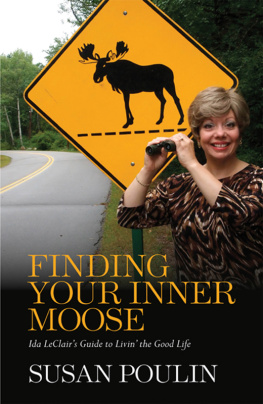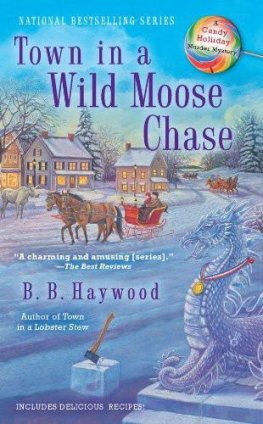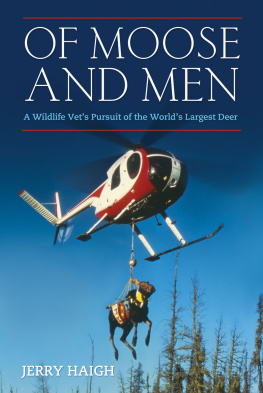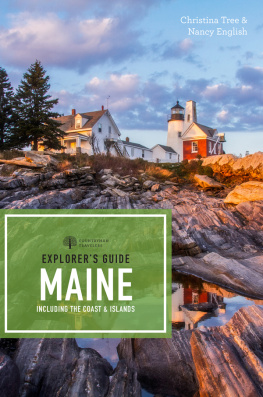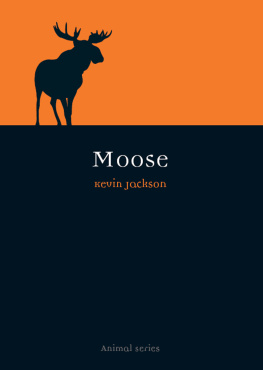Islandport Press, Inc.
P.O. Box 10
Yarmouth, Maine 04096
www.islandportpress.com
All Rights Reserved. Printed in U.S.A.
Dean L. Lunt, publisher
Book jacket design by Karen F. Hoots / Hoots Design
Book design by Michelle A. Lunt / Islandport Press
Cover image by Gordon Carlisle
Foreword
by Rebecca Rule
Meet Ida LeClair, whoalong with best friends Celeste, Rita, Betty, Dot, and Shirleymake up the social club Women Who Run with the Moose. They considered calling themselves Women Who Run with the Potatoes and Women Who Crawl with the Lobsters, but potatoes and lobsters, though powerful totems, didnt carry the cachet of a moose.
Ida LeClair is, in turn, the creation and alter ego of Susan Poulin, writer, actress, storyteller, and all-around talented, lively, warm, funny, and highly original human being. She wrote this book. She writes Ida. She kind of is Ida, but not reallyif you catch my drift.
Ida cashiers down to the A&P. She enjoys it. She enjoys her customers. Most of them. Shes determined to enjoy most things in life. Thats just the way she is. She certainly enjoys the Women Who Run with the Moose, and chronicles their adventures as they shop, get their hair done, eat out, diet, play practical jokes on their husbands, take day trips to the big cities (Portland and Bangor), and, generally, squeeze as much juice out of life in Mahoosuc Mills, Maine, as there is to squeeze. The girls have a darned good time. And, God, dont they like to laugh! And dont they find a lot to laugh about.
Not the least of which is their husbands. Ida loves her Charlie to death, its true, but that doesnt blind her to some of his idiosyncrasies. Or her own. As she and the girls age, as gracefully as possible, they are often inspired by, what else, the moose.
The moose has a flap of skin under its chin called the bell, Ida explains, which kind of sways as it walks. That didnt use to apply to me, but the older I get, ding-dong. What can you do?
What you can do is take what comes in stride with an easy moose-like lope, always remembering to laugh.
So, heres what youll find on these pages:
Idas stories of her life in Mahoosuc Mills.
Idas how-to-live-life-to-the-fullest advice gleaned from her experiences.
Moose lore galore.
Idas husband Charlies peanut-gallery observations, except theyre not from the peanut gallery, theyre from his beloved Barcalounger.
Idas niece Caitlin piping up now and then with her New Agey take on Idas wisdom and, perhaps, offering a writing or breathing or imagining exercise to help you find your inner moose.
Idas down-to-earth (and hilarious) reinterpretation of Caitlins instructions.
What youll also find on these pages is a guide to living with few regrets, with integrity, and joie de vivre (thats French, like Ida). And youll find moments of recognition (thats me!) along with many smiles, many belly laughs, and some wicked good advice.
Like: Whenever you find a restroom, use it; you never know when the next opportunity will present itself. Ida calls this theory Carpe Peeum.
Like: Whenever you find a restroom, use it; you never know when the next opportunity will present itself. Ida calls this theory Carpe Peeum.
Like: Pick one healthy thing you know you should be doing and get it over with early in the day.
Or: Nourish your friendships and yourself by having a standing breakfast or lunch date with a friend or two.
Something I learned: Moose calves are born with their eyes wide openwide open! Ida LeClairs eyes are wide open.
And so is her heart.
Rebecca Rule is a storyteller and author. She regularly performs throughout New Hampshire, and her humor books include Headin for the Rhubarb! A New Hampshire Dictionary (well, kinda) and Live Free and Eat Pie! A Storytellers Guide to New Hampshire. Her first childrens book, The Iciest, Diciest, Scariest Sled Ride Ever!, will be published in November 2012.
Authors Note
Ida came to me in 1996.
I was competing in the first (and, as far as I know, only) Yankee Yarns Contest in Keene, New Hampshire. At the contest, there were people from all over New England telling ten-minute stories in different categories: traditional, contemporary, for children, with music, etc.
I entered the contest on a lark to tell a story of mine called The Stud Finder, which placed me squarely in the contemporary category. My story took a new look at an old problemfinding a guy. I didnt think I stood a chance. In fact, I secretly hoped the judges might give me an Honorable Mention for most sexual innuendo in a Yankee Yarn. (Not a high bar since the genre is devoid of sexual innuendo.)
No one was more surprised than me when I actually won in my category and got to perform that night at the Colonial Theatre. Veteran Maine storyteller Tim Sample was the host that evening. He and Bob Bryan of Bert and I fame told some of the old Bert and I stories that Bob and Marshall Dodge had made famous.
I was in good company. But as the show progressed, I realized that I was the only woman on stage, flanked by a bunch of guys in flannel shirts joking about their mothers-in-law. I thought, You know what? These stories dont portray the strength, humor, and good old-fashioned common sense of the women I knew growing up. Plus, their point of view reflected a Yankee sensibility (it was a Yankee Yarns Contest, after all) that was a world away from the Franco-American culture in which I was raised. Where was the joie de vivre?
And thats when Ida came to me. I wanted to create a character who would pay homage to those women; a gal who didnt have much formal education, but who possessed a strong sense of herself, a great sense of humor, and street smarts, if you can use such a term for someone who lives in a small town. And, most importantly, I wanted to create a gal with a Franco-American background who spoke with a Maine accent, like so many in my family.
I clearly remember the exact moment it happenedthe day Ida happened. One morning as I sat staring at my blank computer screen, I heard this voice in my head say, Hi there! My names Ida, and Im a Home Shopping Networkaholic.
Ida was born.
I found I could channel this wonderful and oh-so-familar woman. Ida told me stories even if I came to my computer empty. I saw my mother in her immediately, and my dad, and many of the wise and wonderful people I knew growing up. The more I wrote, the more a familiar world unfolded; a world quite apart from the one that appeared in traditional Down East stories.

